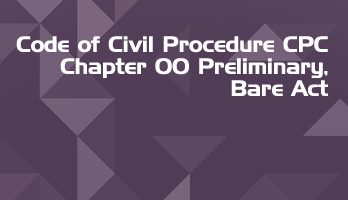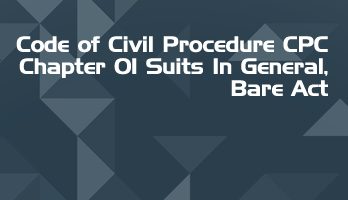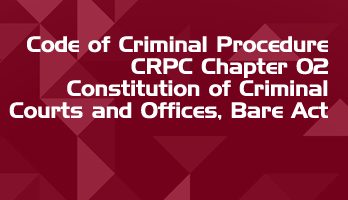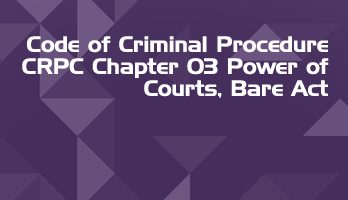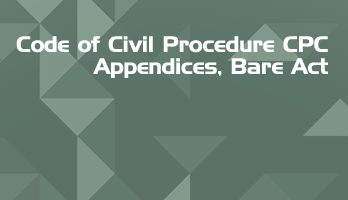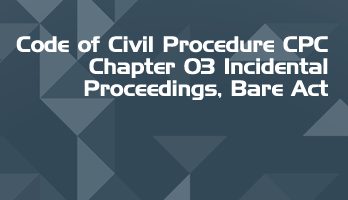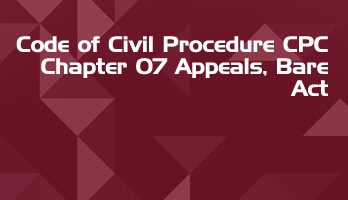A 'Bare act' is the actual legislation passed by the Parliament of India. Generally, an act sets out the high level legal and policy principles applicable to the subject matter of the law.
Most acts are accompanied by 'subsidiary legislation' such as rules, regulations, notifications and orders; which address the actual implementation detail of the act.
Free Full Course Available on LawMint's YouTube Channel
How to Land Your Dream LLB Internship in a Top Law Firm
- Part 1 - Introduction
- Part 2 - Internship Planning
- Part 3 - Internship Research
- Part 4 - Building Your Profile
- Part 5 - The Email
- Part 6 - The Resume
- Part 7 - The Cover Letter
- Part 8 - The Interview
- Part 9 - Self Development
Practical and comprehensive course, with real examples and step-by-step analysis of the complete internship application process. Check out LawMint's YouTube channel now!
The Indian Evidence Act, 1872
Chapter 5 – Of Documentary Evidence
Section 61 – Proof of contents of documents
The contents of documents may be proved either by primary or by secondary evidence.
Section 62 – Primary evidence
Primary evidence means the document itself produced for the inspection of the Court.
Explanations
- Where a document is executed in several parts, each part is primary evidence of the document; Where a document is executed in counterpart, each counterpart being executed by one or some of the parties only, each counterpart is primary evidence as against the parties executing it.
- Where a number of documents are all made by one uniform process, as in the case of printing, lithography, or photography, each is primary evidence of the contents of the rest; but, where they are all copies of a common original, they are not primary evidence of the contents of the original.
Illustrations A person is shown to have been in possession of a number of placards, all printed at one time from one original. Any one of the placards is primary evidence of the contents of any other, but no one of them is primary evidence of the contents of the original.
Section 63 – Secondary evidence
Secondary evidence means and includes –
- Certified copies given under the provisions hereinafter contained;
- Copies made from the original by mechanical processes which in themselves insure the accuracy of the copy, and copies compared with such copies;
- Copies made from or compared with the original;
- Counterparts of documents as against the parties who did not execute them;
- Oral accounts of the contents of a document given by some person who has himself seen it.
Illustrations
- A photograph of an original is secondary evidence of its contents, though the two have not been compared, if it is proved that the thing photographed was the original.
- A copy compared with a copy of a letter made by a copying machine is secondary evidence of the contents of the letter if it is shown that the copy made by the copying machine was made from the original.
- A copy transcribed from a copy, but afterwards compared with the original, is secondary evidence; but the copy not so compared is not secondary evidence of the original, although the copy from which it was transcribed was compared with the original.
- Neither art oral account of a copy compared with the original, nor an oral account of a photograph or machine copy of the original, is secondary evidence of the original.
Section 64 – Proof of documents by primary evidence
Documents must be proved by primary evidence except in the cases hereinafter mentioned.
Section 65 – Cases in which secondary evidence relating to documents may be given
Secondary evidence may be given of the existence, condition, or contents of a document in the following cases –
- When the original is shown or appears to be in the possession or power – of the person against whom the document is sought to be proved, or of any person out of reach of, or not subject to, the process of the Court, or of any person legally bound to produce it, and when, after the notice mentioned in section 66, such person does not produce it;
- when the existence, condition or contents of the original have been proved to be admitted in writing by the person against whom it is proved or by his representative in interest;
- when the original has been destroyed or lost, or when the party offering evidence of its contents cannot, for any other reason not arising from his own default or neglect, produce it in reasonable time;
- when the original is of such a nature as not to be easily movable;
- when the original is a public document within the meaning of section 74;
- when the original is a document of which a certified copy is permitted by this Act, or by any other law in force in India to be given in evidence;
- when the original consists of numerous accounts or other documents which cannot conveniently be examined in Court and the fact to be proved is the general result of the whole collection. In cases (a), c and (d), any secondary evidence of the contents of the document is admissible. In case (b), the written admission is admissible. In case (e) or (f), a certified copy of the document, but no other kind of secondary evidence, is admissible. In case (g), evidence may be given as to the general result of the documents by any person who has examined them, and who is skilled in the examination of such documents.
Section 65A – Special provisions as to evidence relating to electronic record
The contents of electronic records may be proved in accordance with the provisions of section 65B (w.e.f. 17 – 10 – 2000).
Section 65B – Admissibility of electronic records
- Notwithstanding anything contained in this Act, any information contained in an electronic record which is printed on a paper, stored, recorded or copied in optical or magnetic media produced by a computer (hereinafter referred to as the computer output) shall be deemed to be also a document, if the conditions mentioned in this section are satisfied in relation to the information and computer in question and shall be admissible in any proceedings, without further proof or production of the original, as evidence or any contents of the original or of any fact stated therein of which direct evidence would be admissible.
- The conditions referred to in sub – section (1) in respect of a computer output shall be the following, namely –
- the computer output containing the information was produced by the computer during the period over which the computer was used regularly to store or process information for the purposes of any activities regularly carried on over that period by the person having lawful control over the use of the computer;
- during the said period, information of the kind contained in me electronic record or of the kind from which the information so contained is derived was regularly fed into the computer in the ordinary course of the said activities;
- throughout the material part of the said period, the computer was operating properly or, if not, then in respect of any period in which it was not operating properly or was out of operation during that part of the period, was not such as to affect the electronic record or the accuracy of its contents; and
- the information contained in the electronic record reproduces or is derived from such information fed into the computer in the ordinary course of the said activities.
- Where over any period, the function of storing or processing information for the purposes of any activities regularly carried on over that period as mentioned in clause (a) of sub – section (2) was regularly performed by computers, whether –
- by a combination of computers operating over that period; or
- by different computers operating in succession over that period; or
- by different combinations of computers operating in succession over that period; or
- in any other manner involving the successive operation over that period, in whatever order, of one or more computers and one or more combinations of computers, all the computers used for that purpose during that period shall be treated for the purposes of this section as constituting a single computer; and references in the section to a computer shall be construed accordingly.
- In any proceedings where it is desired to give a statement in evidence by virtue of this section, a certificate doing any of the following things, that is to say –
- identifying the electronic record containing the statement and describing the manner in which it was produced;
- giving such particulars of any device involved in the production of that electronic record as may be appropriate for the purpose of showing that the electronic record was produced by a computer;
- dealing with any of the matters to which the conditions mentioned in sub – section (2) relate, and purporting to be signed by a person occupying a responsible official position in relation to the operation of the relevant device or the management of the relevant activities (whichever is appropriate) shall be evidence of any matter stated in the certificate; and for the purposes of this sub – section it shall be sufficient for a mailer to be stated to the best of the knowledge and belief of the person stating it.
- For the purposes of this section –
- information shall be taken to be supplied to a computer if it is supplied thereto in any appropriate form and whether it is so supplied directly or (with or without human intervention) by means of any appropriate equipment;
- whether in the course of activities carried on by any official information is supplied with a view to its being stored or processed for the purposes of those activities by a computer operated otherwise than in the course of those activities, that information, if duly supplied to that computer, shall be taken to be supplied to it in the course of those activities;
- a computer output shall be taken to have been produced by a computer whether it was produced by it directly or (with or without human intervention) by means of any appropriate equipment.
Explanations For the purposes of this section any reference to information being derived from other information shall be a reference to its being derived there from by calculation, comparison or any other process.
Section 66 – Rules as to notice to produce
Secondary evidence of the contents of the documents referred to in section 65, clause (a), shall not be given unless the party proposing to give such secondary evidence has previously given to the party in whose possession or power the document is, or to his attorney or pleader, such notice to produce it as is prescribed by law, and if no notice is prescribed by law, then such notice as the Court considers reasonable under the circumstances of the case;
Provided that such notice shall not be required in order to render secondary evidence admissible in any of the following cases, or in any other case in which the Court thinks fit to dispense with it –
- when the document to be proved is itself a notice;
- when, from the nature of the case, the adverse party must know that he will be required to produce it;
- when it appears or is proved that the adverse party has obtained possession of the original by fraud or force;
- when the adverse party or his agent has the original in Court;
- when the adverse party or his agent has admitted the loss of the document;
- when the person in possession of the document is out of reach of, or not subject to, the process of the Court.
Section 67 – Proof of signature and handwriting of person alleged to have signed or written document produced
If a document is alleged to be signed or to have been written wholly or in part by any person, the signature or the handwriting of so much of the document as is alleged to be in that person’s handwriting must be proved to be in his handwriting.
Section 67A – Proof as to digital signature
Except in the case of a secure digital signature, if the digital signature of any subscriber is alleged to have been affixed to an electronic record the fact that such digital signature is the digital signature of the subscriber must be proved.
Section 68 – Proof of execution of document required by law to be attested
If a document is required by law to be attested, it shall not be used as evidence until one attesting witness at least has been called for the purpose of proving its execution, if there be an attesting witness alive, and subject to the process of the Court and capable of giving evidence;
Provided that it shall be necessary to call an attesting witness in proof of the execution of any document, not being a Will, which has been registered in accordance with the provisions of the Indian Registration Act, 1908 (16 of 1908), unless its execution by the person by whom it purports to have been executed is specifically denied.
Section 69 – Proof where no attesting witness found
If no such attesting witness can be found, or if the document purports to have been executed in the United Kingdom, it must be proved that the attestation of one attesting witness at least is in his handwriting, and that the signature of the person executing the documents is in the handwriting of that person.
Section 70 – Admission of execution by party to attested document
The admission of a party to an attested document of its execution by himself shall be sufficient proof of its execution as against him, though it be a document required by law to be attested.
Section 71 – Proof when attesting witness denies the execution
If the attesting witness denies or does not recollect the execution of the document, its execution may be proved by other evidence
Section 72 – Proof of document not required by law to be attested
An attesting document not required by law to be attested may be proved as if it was unattested.
Section 73 – Comparison of signature, writing or seal with others admitted or proved
In order to ascertain whether a signature, writing, or seal is that of the person by whom it purports to have been written or made, any signature, writing, or seal admitted or proved to the satisfaction of the Court to have been written or made by that person may be compared with the one which is to be proved, although that signature, writing, or seal has not been produced or proved for any other purpose.
The Court may direct any person present in court to write any words or figures for the purpose of enabling the Court to compare the words or figures so written with any words or figures alleged to have been written by such person.
This section applies also, with any necessary modifications, to finger – impressions.
Section 73A – Proof as to verification of digital signature
In order to ascertain whether a digital signature is that of the person by whom it purports to have been affixed, the Court may direct –
- that person or the Controller or the Certifying Authority to produce the Digital Signature Certificate;
- any other person to apply the public key listed in the Digital Signature Certificate and verify the digital signature purported to have been affixed by that person.
Explanations For the purposes of this section, Controller means the Controller appointed under sub – section (1) of section 17 of the Information Technology Act, 2000.
Sections 74 to 78 – Public Documents
Section 74 – Public documents
The following documents are public documents –
- Documents forming the acts, or records of the acts –
- of the sovereign authority,
- of official bodies and tribunals, and
- of public officers, legislative, judicial and executive, of any part of India or of the Commonwealth, or of a foreign country;
- Public records kept in any State of private documents.
Section 75 – Private documents
All other documents are private.
Section 76 – Certified copies of public documents
Every public officer having the custody of a public document, which any person has a right to inspect, shall give that person on demand a copy of it on payment of the legal fees therefore, together with a certificate written at the foot of such copy that it is true copy of such document or part thereof, as the case may be and such certificate shall be dated and subscribed by such officer with his name and his official title, and shall be sealed, whenever such officer is authorised by law to make use of a seal; and such copies so certified shall be called certified copies.
Explanations Any officer who, by the ordinary course of official duty, is authorized to deliver such copies, shall be deemed to have the custody of such documents within the meaning of this section. 1. A village – officer in the Punjab has been declared for the purposes of this Act to be a public officer having the custody of a public document – see the Punjab Land Revenue Act, 1887 (17 of 1887), section, 151 (2).
Section 77 – Proof of documents by production of certified copies
Such certified copies may be produced in proof of the contents of the public documents or parts of the public documents of which they purport to be copies.
Section 78 – Proof of other official documents
The following public documents may be proved as follows –
- Acts, orders or notifications of the Central Government in any of its departments, or of the Crown Representative or of any State Government or any department of any State Government – by the records of the departments, certified by the head of those departments respectively, or by any document purporting to be printed by order of any such Government or as the case may be, of the Crown Representative;
- The proceedings of the Legislatures – by the journals of those bodies respectively, or by published Acts or abstracts, or by copies purporting to be printed by order of the Government concerned;
- Proclamations, orders or regulations issued by Her Majesty or by the Privy Council, or by any department of Her Majesty’s Government – by copies or extracts contained in the London Gazette, or purporting to be printed by the Queen’s printer;
- the acts of the Executive or the proceedings of the Legislature of a foreign country – by journals published by their authority, or commonly received in that country as such, or by a copy certified under the seal of the country or sovereign, or by a recognition thereof in some Central Act;
- The proceedings of a municipal body in a State – by a copy of such proceedings, certified by the legal keeper thereof, or by a printed book purporting to be published by the authority of such body;
- Public documents of any other class in a foreign country – by the original, or by a copy certified by the legal keeper thereof, with a certificate under the seal of a Notary Public, or of an Indian Consul or diplomatic agent that the copy is duly certified by the officer having the legal custody of the original, and upon proof of the character of the document according to the law of the foreign country.
STATE AMENDMENT West Bengal After section 78, insert the following section namely: “78A. Copies of public documents, to be as good as original documents in certain cases – Notwithstanding anything contained in this Act or any other law for the time being in force, where any public documents concerning any areas within West Bengal have been kept in Pakistan, then copies of such public documents shall, on being authenticated in such manner as may be prescribed from time to time by the State Government by notification in the Official Gazette, be deemed to have taken the place of and to be, the original documents from which such copies were made and all references to the original documents shall be construed as including reference to such copies.”
Sections 79 to 90A – Presumptions as to documents
Section 79 – Presumption as to genuineness of certified copies
The Court shall presume to be genuine every document purporting to be a certificate, certified copy, or other document, which is by law declared to be admissible as evidence of any particular fact and which purports to be duly certified by an officer of the Central Government or of a State Government, or by any officer in the Slate of Jammu and Kashmir who is duly authorized thereto by the Central Government;
Provided that such document is substantially in the form and purports to be executed in the manner directed by law in that behalf.
The Court shall also presume that any officer by whom any such document purports to be signed or certified held when he signed it, the official character which he claims in such paper.
Section 80 – Presumption as to documents produced as record of evidence
Whenever any document is produced before any Court, purporting to be a record or memorandum of the evidence, or of any part of the evidence, given by a witness in a judicial proceedings or before any officer authorised by law to take such evidence or to be a statement or confession by any prisoner or accused person, taken in accordance with law, and purporting to be signed by any judge or Magistrate or by any such officer as aforesaid the Court shall presume – that the document is genuine; that any statements as to the circumstances under which it was taken, purporting to be made by the person signing it, are true, and that such evidence, statement or confession was duly taken.
Section 81 – Presumption as to Gazettes, newspapers, private Acts of Parliament and other documents
The Court shall presume the genuineness of every document purporting to be the London Gazette or any Official Gazette, or the Government Gazette of any colony, dependency of possession of the British Crown, or to be a newspaper or journal, or to be a copy of a private Act of Parliament of the United Kingdom printed by the Queen’s Printer and of every document purporting to be a document directed by any law to be kept by any person, if such document is kept substantially in the form required by law and is produced from proper custody.
Section 81A – Presumption as to Gazettes in electronic forms
The Court shall presume the genuineness of every electronic record purporting to be the Official Gazette or purporting to be electronic record directed by any law to be kept by any person, if such electronic record is kept substantially in the form required by law and is produced from proper custody.
Section 82 – Presumption as to document admissible in England without proof of seal or signature
When any document is produced before any Court, purporting to be a document which, by the law in force for the time being in England or Ireland, would be admissible in proof of any particular in any Court of justice in England or Ireland, without proof of the seal or stamp or signature authenticating it, or of the judicial or official character claimed by the person by whom it purports to be signed, the Court shall presume that such seal, stamp or signature is genuine, and mat me person signing it held, at the lime when he signed it, the judicial or official character which he claims, and the document shall be admissible for the same purpose for which it would be admissible in England or Ireland.
The Court shall presume that maps or plans purporting to be made by the authority of the Central Government or any State Government were so made, and are accurate; but maps or plans made for the purposes of any cause must be proved to be accurate.
Section 84 – Presumption as to collections of laws and reports of decisions
The Court shall presume the genuineness of every book purporting to be printed or published under the authority of the Government of any country, and to contain any of the laws of that country, and of every book purporting to contain reports of decisions of the Courts of such country.
Section 85 – Presumption as to power – of – attorney
The Court shall presume that every document purporting to be a power – of – attorney, and to have been executed before, and authenticated by, a Notary Public, or any court, Judge, Magistrate, Indian Consul or Vice – Consul, or representative *** of the Central Government, was so executed and authenticated.
Section 85A – Presumption as to electronic agreements
The Central Government in or for such country to be the manner commonly in use in that country for the certification of copies of judicial records.
An officer who, with respect to any territory or place not forming part of India or Her Majesty’s dominions, is Political Agent therefore, as defined in section 3, clause (43), of the General Clauses Act, 1897 (10 of 1897), shall for the purposes of this section, be deemed to be a representative of the Central Government in and for the country comprising that territory or place.
Section 87 – Presumption as to books, maps and charts
The Court may presume that any book to which it may refer for information on matters of public or general interest, and that any published map or chart, the statements of which are relevant facts and which is produced for its inspection, was written and published by the person and at the time and place, by whom or at which it purports to have been written or published.
Section 88 – Presumption as to telegraphic messages
The Court may presume that a message, forwarded from a telegraph office to the person to whom such message purports to be addressed, corresponds with a message delivered for transmission at the office from which the message purports to be sent; but the Court shall not make any presumption as to the person by whom such message was delivered for transmission.
Section 88A – Presumption as to electronic messages
The Court may presume that an electronic message, forwarded by the originator through an electronic mail server to the addressee to whom the message purports to be addressed corresponds with the message as fed into his computer for transmission; but the Court shall not make any presumption as to the person by whom such message was sent.
Explanations For the purposes of this section, the expressions addressee and originator shall have the same meanings respectively assigned to them in clauses (b) and (za) of sub – section (1) of section 2 of the Information Technology Act, 2000.
Section 89 – Presumption as to due execution, etc. of documents not produced
The Court shall presume that every document, called for and not produced after notice to produce, was attested, stamped and executed in the manner required by law.
Section 90 – Presumption as to documents thirty years old
Where any document, purporting or proved to be thirty years old, is produced from any custody which the Court in the particular case considers proper, the Court may presume that the signature and every other part of such document, which purports to be in the handwriting of any particular person, is in that person’s handwriting, and, in the case of a document executed or attested, that it was duly executed and attested by the persons by whom it purports to be executed and attested.
Explanations Documents are said to be in proper custody if they are in the place in which, and under the care of the person with whom, they would naturally be; but no custody is improper if it is proved to have had a legitimate origin, or the circumstances of the particular case are such as to render such an origin probable.
This explanation applies also to section 81.
Illustrations
- A has been in possession of landed property for a long time. He produces from his custody deeds relating to the land showing his titles to it. The custody is proper.
- A produces deeds relating to landed property of which he is the mortgagee. The mortgagor is in possession. The custody is proper.
- A, a connection of B, produces deeds relating to lands in B’s possession, which were deposited with him by B for safe custody. The custody is proper.
STATE AMENDMENTS Uttar Pradesh
- Renumber section 90 as sub – section (1) thereof;
- in sub – section (1) as so renumbered, for the words thirty years, substitute the words twenty years;
- after sub – section (1) as so renumbered, insert the following sub – section, namely – “(2) Where any such document as is referred to in sub – section (1) was registered in accordance with the law relating to registration of documents and a duly certified copy thereof is produced, the court may presume that the signature and every other part of such document which purports to be in the handwriting of any particular person, it is that person’s handwriting, and in the case of a document executed or attested, that it was duly executed and attested by the person by whom it purports to have been executed or attested.”
- After section 90, insert the following section – “90A. (1) Where any registered document or a duly certified copy thereof or any certified copy of a document which is part of the record of a Court of Justice, is produced from any custody which the Court in the particular case considers proper, the Court may presume that the original was executed by the person by whom it purports to have been executed. (2) This presumption shall not be made in respect of any document which is the basis of a suit or of defence or is relied upon in the plaint or written statement.”
The explanation to sub – section (1) of section 90 will also apply to this section;
Section 90A – Presumption as to electronic records five years old
Where any electronic record, purporting or proved to be five years old, is produced from any custody which the Court in the particular case considers proper, the Court may presume that the digital signature which purports to be the digital signature of any particular person was so affixed by him or any person authorised by him in this behalf.
Explanations Electronic records are said to be in proper custody if they are in the place in which, and under the care of the person with whom, they naturally be; but no custody is improper if it is proved to have had a legitimate origin, or the circumstances of the particular case are such as to render such an origin probable.
This explanation applies also to section 81A.
Important Central Acts in Regional Languages
Legislative department website also features regional language versions of several important Central Acts.
Free Full Course Available on LawMint's YouTube Channel
How to Land Your Dream LLB Internship in a Top Law Firm
- Part 1 - Introduction
- Part 2 - Internship Planning
- Part 3 - Internship Research
- Part 4 - Building Your Profile
- Part 5 - The Email
- Part 6 - The Resume
- Part 7 - The Cover Letter
- Part 8 - The Interview
- Part 9 - Self Development
Practical and comprehensive course, with real examples and step-by-step analysis of the complete internship application process. Check out LawMint's YouTube channel now!



